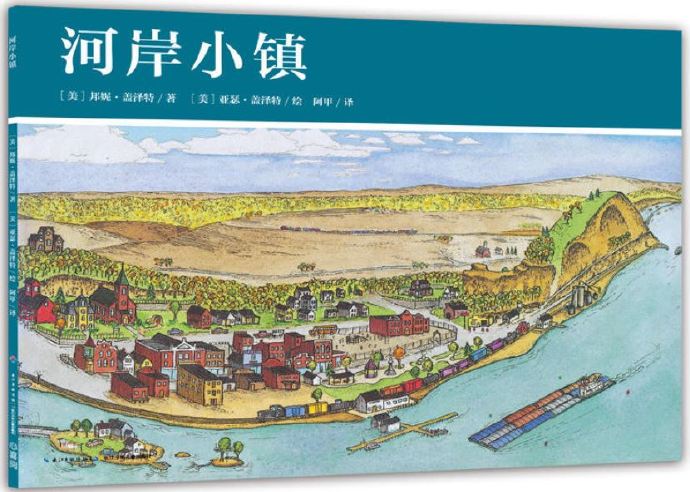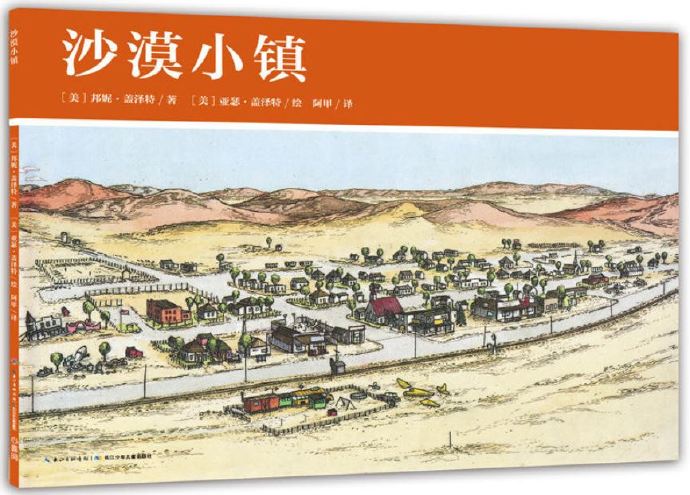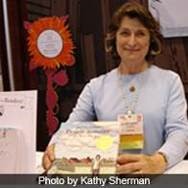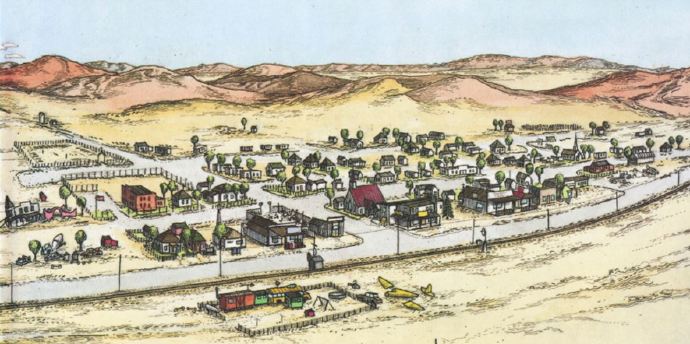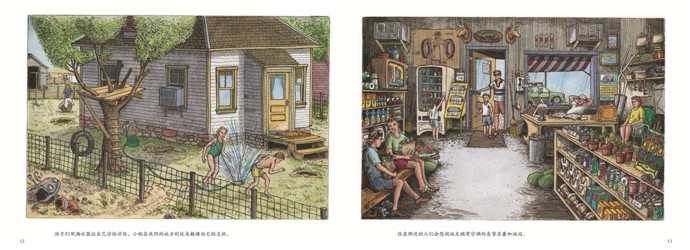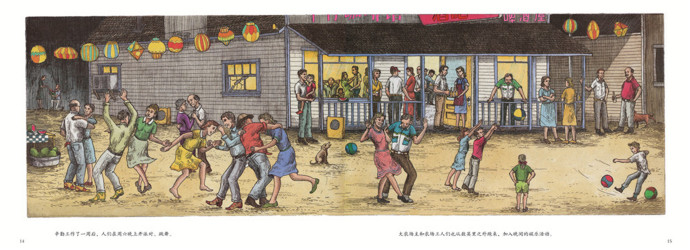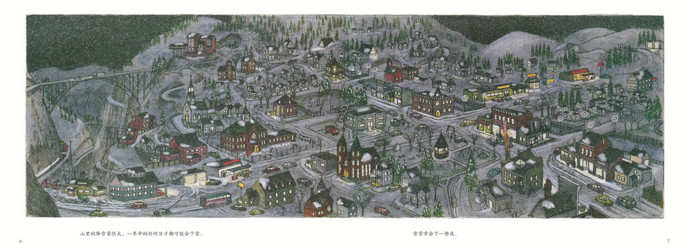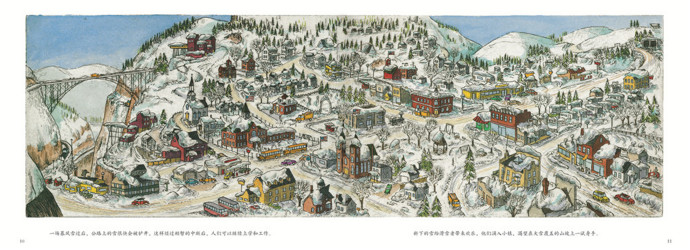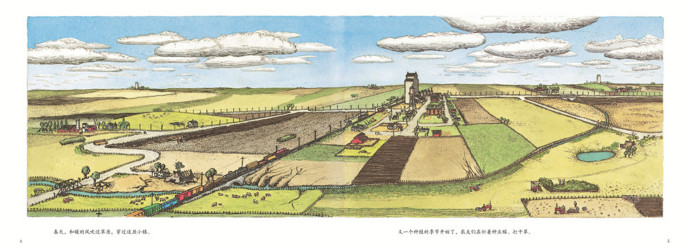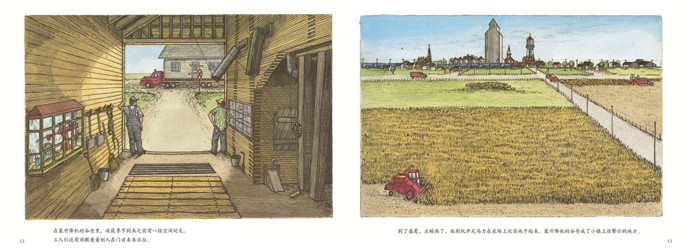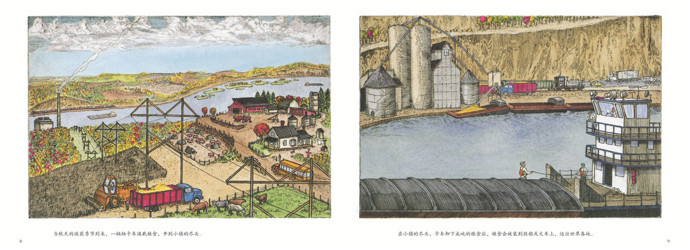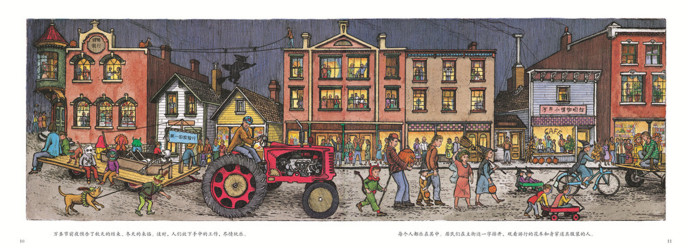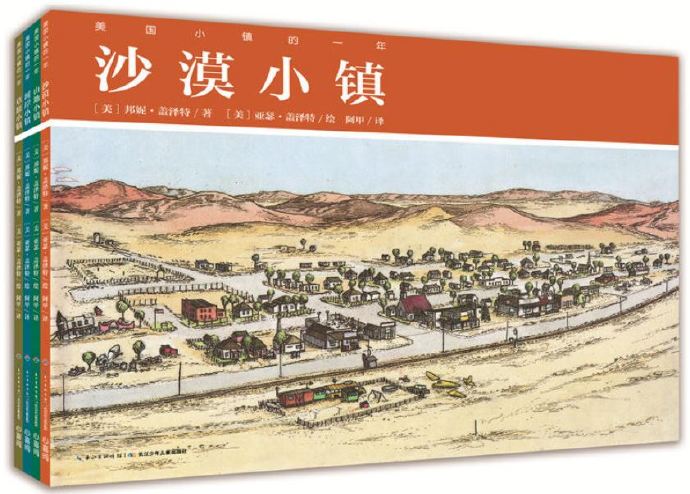
These four picture books realistically depict the basic landscapes of four different American small towns—a prairie town, a river town, a mountain town, and a desert town—and tell the stories of their residents throughout the four seasons. Creatively, they are unadorned to the point of simplicity, while the narrative style is practically a journal. Yet, what’s fascinating is that they’re the kind of books you never tire of reading, discovering new things with each rereading. Even more remarkable, they keep you imagining and might even inspire a desire to delve into the stories behind them.
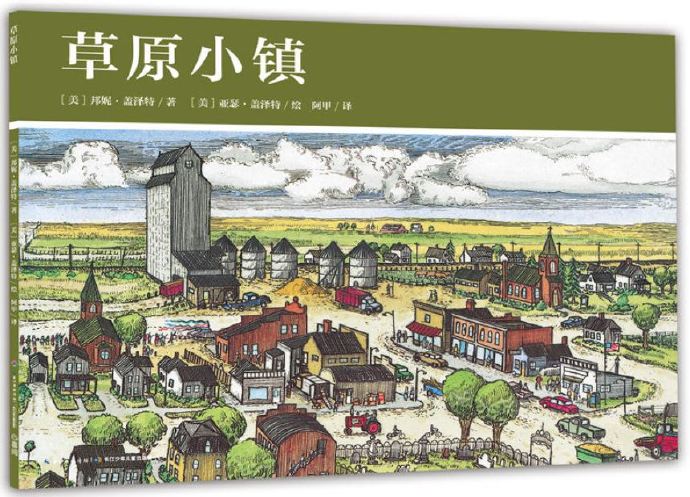
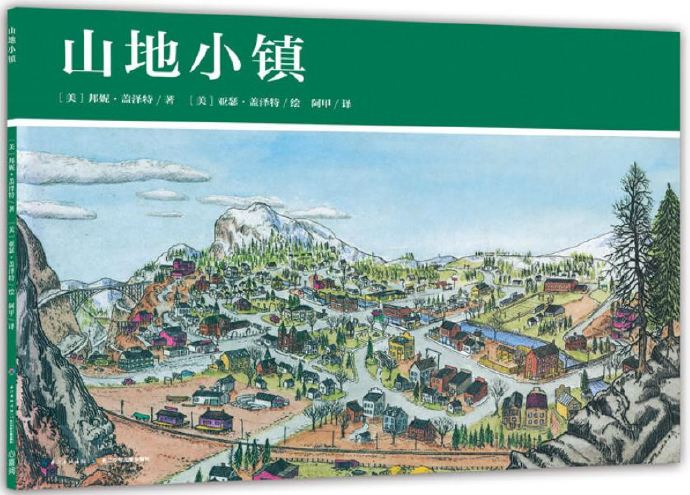
Why do these simple little books have such fascinating charm?
Bonnie and Arthur Gazette, the married couple who created the book, likely had no idea it would captivate readers of all ages. Initially, these small books were likely meant to satisfy their nostalgia for their childhood hometowns and a sense of fading traditional small-town life. When the first volume, “A Small Town on the Prairie,” was published in 1998, Bonnie, the writer, was already 56, and Arthur, the illustrator, was a year older. They lived in Galena, Illinois, a small river town on the Mississippi River in the American Midwest, with a population of just over 3,000.

Bonnie and Arthur, both highly talented students with master’s degrees from prestigious universities, married after graduating from undergraduate school and had a son named Noah—yes, the Noah from Noah’s Ark. Arthur had always been fascinated by the Ark, later illustrating related stories and even founding an Ark-related company. Interestingly, the couple and their child settled in a small town and became teachers at the local school. Bonnie taught for a long time, but in her late 50s, she realized she loved writing more and became a columnist. She then discovered she also loved photography, so she took up the art from scratch and, a few years later, held a solo exhibition. Arthur, on the other hand, discovered early on that his true passion lay not in teaching but in etching, so he established an etching and printing workshop. He built a stone house on the site of an abandoned quarry. The family lived upstairs, the top floor overlooking the majestic Mississippi River. The ground floor housed his workshop, housing an old-fashioned 2,500-pound (over 1,100 kilograms) etching press, the type said to have been used by 16th-century etchers. Arthur used this ancient, unwieldy machine to produce most of his work, including the illustrations for these four small-town picture books. From a contemporary perspective, the small-town life the Geiserts chose could be described as austere. Arthur described his son Noah’s childhood as largely “poor and filthy,” yet the family seemed to enjoy it.
Arthur was the first to enter the children’s book industry. His etchings, seen at an exhibition, captivated Walter Loring, the children’s book editor at Houghton Mifflin in Boston. Loring felt his drawings told stories and possessed a natural childlike quality. Loring was right: Arthur was indeed quite childlike. He spent his free time wandering the farm near his home and loved farm animals, especially pigs. He also had a keen interest in architecture and enjoyed drawing small town buildings—a common hobby among children. Loring and Arthur hit it off immediately, and under Loring’s guidance, Arthur created several picture books featuring pigs, which were generally quite popular.
It’s particularly noteworthy that Walter Loring was actually a highly experienced children’s book editor. An art editor by training, he had headed the children’s book division at Houghton Mifflin since 1965. He collaborated with H.A. Ray, creator of “Curious George,” on two stunning books about astrology (including “Constellations, Let’s Discover Together,” now available in Chinese). He also published classic children’s novels such as “Island of the Blue Dolphins” and “The Giver.” But he was most proud of discovering and nurturing James Marshall, the talented creator of the “George and Martha” series. He also managed other great picture book artists, including David Macaulay (represented by “Black and White”), Chris Van Allsburg (represented by “The Polar Express”), and Alan Saye (represented by “Grandpa’s Journey”). Arthur was fortunate to have met Loring!
Arthur’s creative path naturally gravitated toward the small town around him. Perhaps inspired by his childhood in rural Texas, he was fascinated by haystacks on farms and wanted to draw a book about them. Perhaps during a conversation, he discovered that his wife, a writer, was even more familiar with haystacks than he was, as Bonnie had helped her father farm as a child (Bonnie later wrote several autobiographical novels about her experiences growing up on the farm). Thus, the couple, who had been together for half their lives, became picture book creators. Their debut work, “Haystacks,” published in 1995, was critically acclaimed. This book about haystacks was a rare picture book that captured farm life so realistically and engagingly. However, perhaps due to its overly personal touch, it wasn’t widely circulated. This didn’t dampen Arthur’s enthusiasm, as he discovered a particular fascination with barns with elevators (partly because he himself had been trapped on the top floor of one), and he decided to work with his wife on another book, “Barns with Elevators.” When editor Lorraine first heard Arthur’s idea, she nearly exclaimed, “A barn with an elevator? Give me a break!” The idea was so personal. Lorraine, however, held back, neither rejecting it outright. Instead, she patiently engaged Arthur in a conversation: Where are these barns typically built? What’s usually built next to them? What are the towns with these barns like? How are they located? What are the residents? What’s their charm? Arthur recounted everything he knew about these prairie towns. His final question was: Why not write a book called “Prairie Towns”?
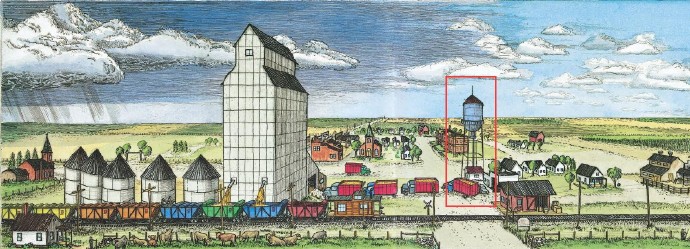
“A Small Town on the Prairie” was a brilliant idea for Bonnie and Arthur! Upon further exploration, Arthur discovered that his fascination wasn’t simply with farm animals, haystacks, and barns; it was the small town itself! Bonnie, having been born and raised on a farm in a small Iowa prairie town, was more than familiar with it. In her first autobiographical novel, “Summer on the Prairie,” she recounted the complex emotions of growing up: with no boys in her family, her sisters began helping their father with manual labor at a young age. She was a somewhat timid girl, especially afraid to approach the farm’s ill-tempered cows. She was too embarrassed to speak about this, yet she longed to perform well in front of her father and make him proud. Ultimately, through her hard work, she achieved her goal… Through “A Small Town on the Prairie,” the couple found an outlet for their fondest passions and memories.
Thus, this seemingly ordinary and simple book is imbued with a rich tapestry of emotion and passion. The illustrators present to readers not a present-day prairie town, but a town from the depths of history, perhaps most reminiscent of the town of their childhoods (in the mid-twentieth century). We witness the townspeople’s hard work throughout the year, as well as their leisure and play; we see the town’s streets and buildings, their respective functions and interconnections; we see the impact of the changing seasons on people’s lives, and the harmonious coexistence of people with nature. Of course, this alone would make it a very practical social history picture book. But they don’t stop there. They (especially Arthur, the illustrator) have incorporated many playful “episodes” into the book—weddings, funerals, small fires, minor accidents, a newly built tree house, a sold house, new puppies, a runaway cow… A careful exploration of the small town’s canvas reveals the vibrant and lively life of a small town. Until you discover it, life may seem “just so-so”; but once you do, it becomes deeply fascinating. Isn’t this also true in our own daily lives?
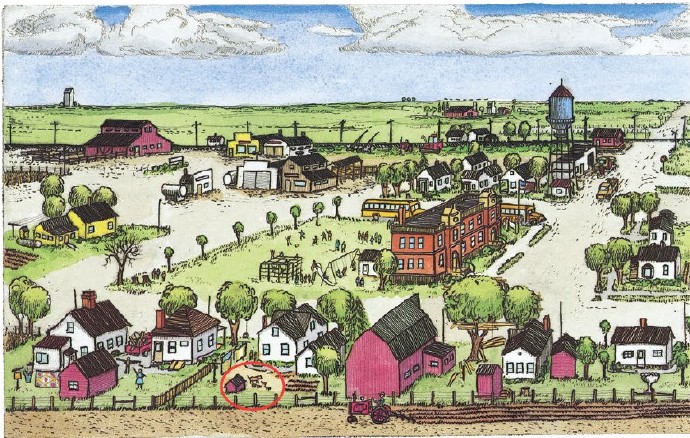
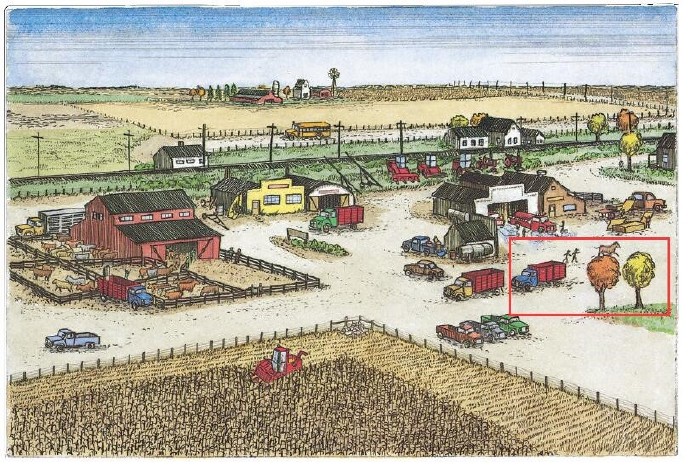
This book, “A Small Town on the Prairie,” and the several subsequent small-town picture books, remind me of Laura Ingalls Wilder’s “Little House” series, the most famous of which is undoubtedly “Little House on the Prairie.” The “Little House” series tells the story of the Ingalls family’s pioneering life in the western prairie around the 1870s. The writing is simple, yet the stories are deeply moving. The pioneers’ perseverance in the face of harsh conditions, their rich wisdom, and their ever-optimistic attitude leave a lasting impression, and even a yearning for that kind of life. Reading these four “A Year in Small Town America” picture books has a similar feeling. When it comes to contemporary America, people tend to imagine it as a world of “extravagance” and “materialism.” That’s part of the truth, but not the whole story. Picture books like these reveal another side of American civilization, and indeed, another side of human civilization, a side that perhaps we should cherish more.
Because of this, this series of picture books has been hailed as “a delightful American document” and has been highly praised by American librarians and educators. I believe the stories they tell, the knowledge they introduce, and the spirit they hope to convey are also very suitable for young Chinese readers; and the beautiful images and the countless little secrets hidden in them will surely fascinate our children.
Such fascinating paper archives are not exclusive to American children. Of course, shouldn’t we also build more such beautiful and fascinating Chinese paper archives?
Written in Beijing on October 15, 2016
